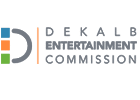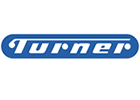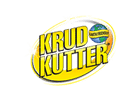By Janice Ramos
Your potential customers aren’t just browsing the internet for fun, they’re asking questions, seeking solutions, and actively looking for businesses that can help them. The key to connecting with them is Question-Based Content, a strategic approach to content creation that focuses on answering your audience’s real queries in a clear, authoritative, and engaging way.
Why Question-Based Content Works
When someone types a question into Google, they’re already signaling intent. This makes question-driven queries some of the most valuable opportunities for generating high-quality leads. Instead of chasing vague, high-volume keywords, Question-Based Content allows you to target specific search terms that address the exact needs, problems, and decision-making points of your ideal clients.
By creating content that directly addresses those needs, you’re not just improving your SEO—you’re positioning your business as a trusted advisor.
Step 1: Identify the Questions That Matter Most
The first step in building Question-Based Content is research. You need to uncover the exact questions your target audience is asking at each stage of their buying journey. Some of the best places to find them include:
- Google’s “People Also Ask” feature
- Online forums and industry-specific communities
- Social media discussions
- Sales and customer service FAQs
- Competitor content gaps
The goal here is to create a master list of questions that align with your business offerings and your prospects’ challenges.
Step 2: Provide Direct, Data-Driven Answers
The hallmark of effective Question-Based Content is clarity. Each piece of content should:
- Start with a straightforward answer to the question
- Provide supporting data, examples, or case studies
- Include a clear next step for the reader (like booking a consultation or downloading a guide)
Avoid fluff and jargon—your readers want actionable advice, not vague generalities.
Step 3: Optimize for Search and Conversion
Answering the question isn’t enough—you also need to ensure your content gets found. Use SEO best practices:
- Include the question in your headline and H2 tags
- Add related keywords naturally within the content
- Use structured data markup to increase the chances of appearing in featured snippets
Pair your SEO efforts with conversion-focused elements like CTAs, lead magnets, and contact forms so that visitors can take immediate action.
If you want to dominate search rankings and turn more question-based queries into paying clients, you need a targeted, high-impact SEO strategy.
DoubleDome Digital Marketing specializes in creating and optimizing content strategies that help businesses like yours get found by the right people at the right time. Let’s build an SEO plan that brings you measurable results—contact DoubleDome today.








